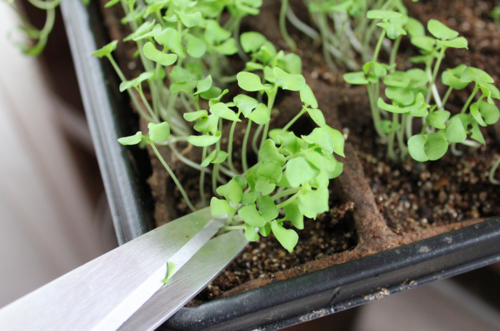
Microgreens are the initial, small leaves produced by leafy green edible plants. The types of plants that produce microgreens include lettuce, radishes, rocket (arugula) and so forth. They're suitable for container growing both indoors and out.
The microgreens are harvested for eating when the leaves are only about 2.5cm in height. If they grow larger, from 7.5cm to 10cm, they become baby greens.
Many seeds can be planted in close proximity in a shallow container to produce microgreens. Since there is no need to thin out the seedlings and they're too young to experience competition for space, microgreens are compact growing plants that can be fitted into a windowsill or small space.
Growing microgreens
Select a suitable edible plant that produces leafy green growth known to be safe to eat. Obviously, choose flavours that please your palate - if wished, mix up the seeds for different varieties growing in the one container. Some suggestions include:
- Lettuce
- Radishes
- Mustard
- Rocket (arugula)
- Kale
- Mizuna
- Cress
- Pak or bok choi
Choose a suitable shallow container. Ensure that it has sufficient drainage; if not, punch a few additional holes into it. Fill with compost up to around 2.5cm from the top of the container.
Sow the seeds thickly. Then sprinkle seed raising mixture or soil over the top.
Water in well. Then keep moist but not waterlogged. Do not let the soil dry out at any stage of the sprouts will easily die.
Expect the microgreens to grow faster during warmer weather.
Harvesting the microgreens
Harvest when the microgreens have grown lushly to around 2.5 to 5cm. The first true leaves should have grown (not the first set of leaves, which are the seed leaves).
To harvest, simply cut off with a clean pair of scissors or herb snips. Harvest as much or as little as you need. If all the microgreens are removed, plant new seeds to start the next "crop" for harvesting. Don't leave too long or they'll grow bigger and if the container isn't deep enough for roots, the plants will suffer.